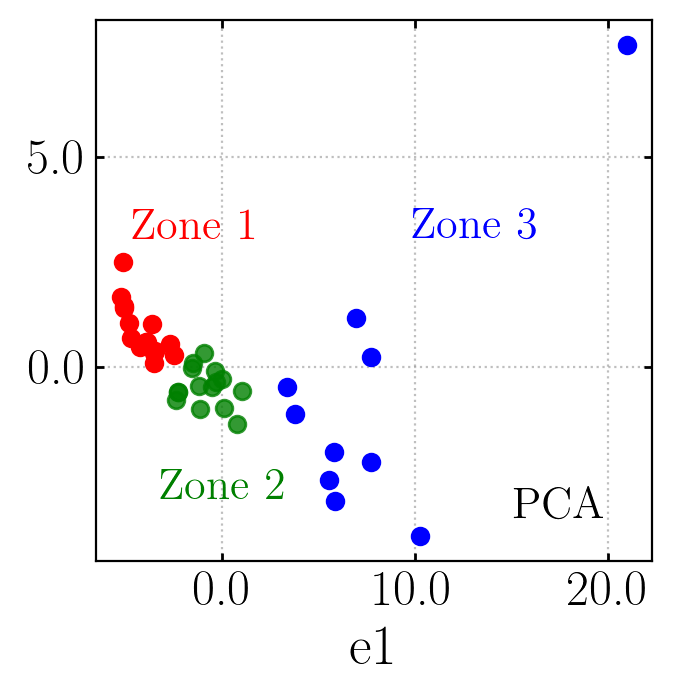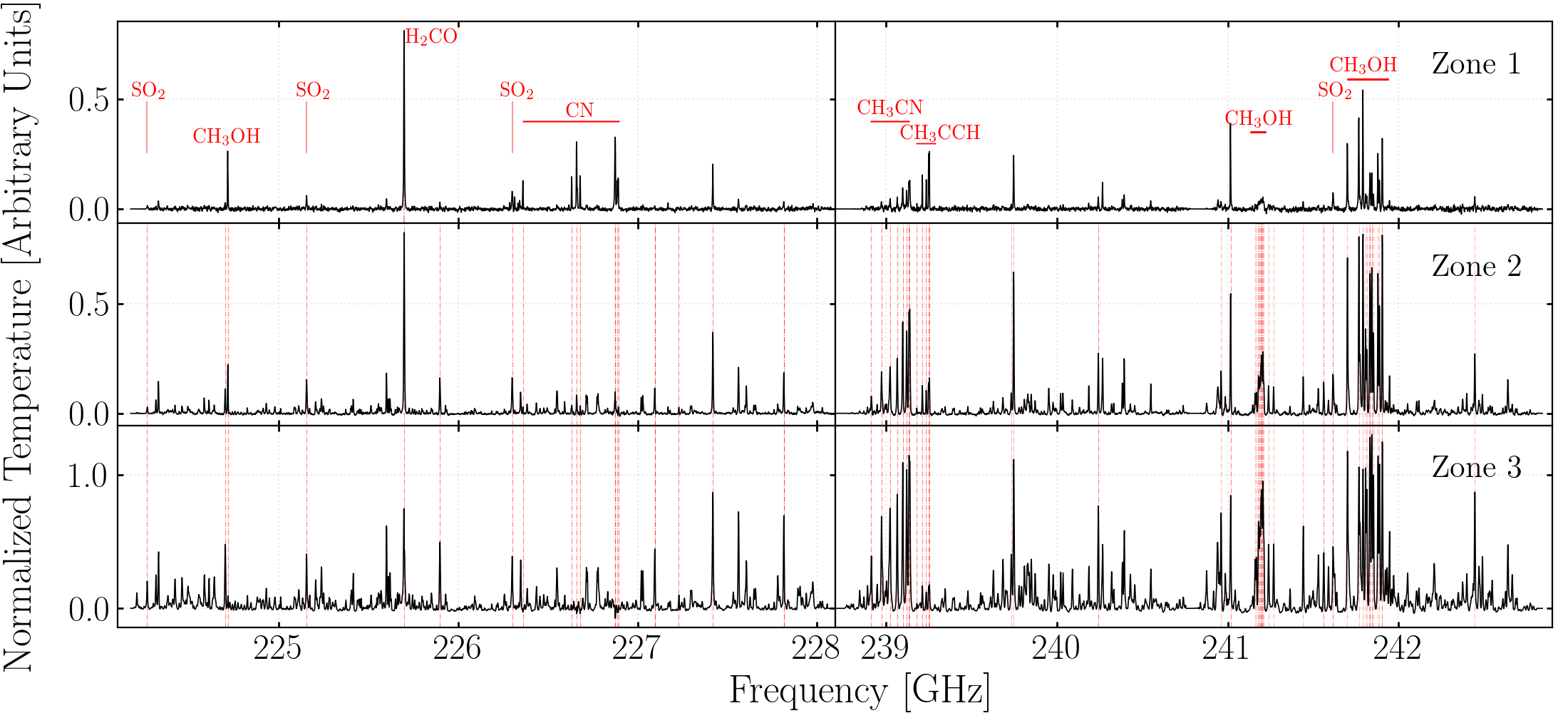
Massive stars (M★ > 8M⊙) play a fundamental role in the evolution of their host galaxy, as they can change the chemical composition and physical structure of their environment due to their high luminosity and strong ionizing radiation output. They are usually formed in clusters and high-density regions, however, their formation process is not yet completely understood. Complex Organic Molecules (COMs) chemistry has been observed in different interstellar medium phases, and it can be a powerful tool to study both low-mass and high-mass star formation. Therefore, this research is aimed at the search for patterns of chemical evolution in a large sample of Massive Young Stellar Objects (MYSOs) selected from different catalogs. To accomplish this goal, we analyzed COMs chemistry in individual sources using mm-wave (1.1-1.4 mm) spectra from ALMA Band 6 observations. We applied dimensionality reduction techniques, such as Principal Component Analysis (left figure) and Hessian Locally Liner Embedding, to find patterns in large samples of spectral data. The analysis of methanol, methyl acetylene, and methyl cyanide in individual spectra showed that the physical parameters, like excitation temperature and column density, match other observations. This was despite some uncertainties in estimates and the fact that some COMs were not detected in all sources. The results from the spectral analysis in reduced dimensions show that eigen-spectra can be tied to specific physical causes and related to MYSO parameters. This shows that the approach is effective in simplifying a many-variable problem and that physical conclusions can be retrieved from dimensionally reduced MYSO spectra.
using mm-wave (1.1-1.4 mm) spectra from ALMA Band 6 observations. We applied dimensionality reduction techniques, such as Principal Component Analysis (left figure) and Hessian Locally Liner Embedding, to find patterns in large samples of spectral data. The analysis of methanol, methyl acetylene, and methyl cyanide in individual spectra showed that the physical parameters, like excitation temperature and column density, match other observations. This was despite some uncertainties in estimates and the fact that some COMs were not detected in all sources. The results from the spectral analysis in reduced dimensions show that eigen-spectra can be tied to specific physical causes and related to MYSO parameters. This shows that the approach is effective in simplifying a many-variable problem and that physical conclusions can be retrieved from dimensionally reduced MYSO spectra.
